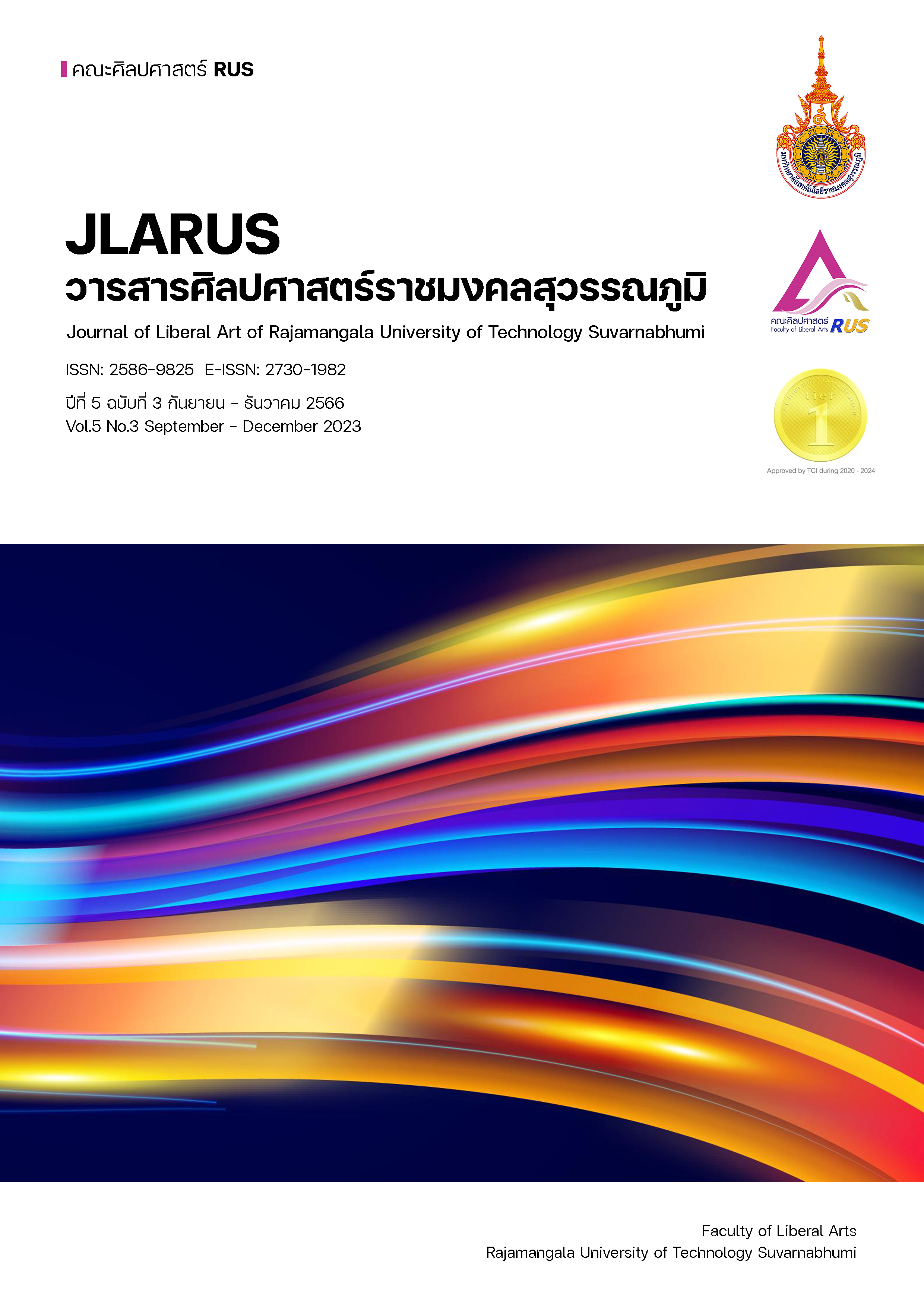CONVEYING THE EIGHT DESIRABLE CHARACTERISTICS OF WOMEN IN PRIMARY EDUCATION THAI TEXTBOOKS
Main Article Content
Abstract
This research aimed to examine Thai textbooks of primary education levels 1-6 concerning eight desirable characteristics of women through female characters in the main stories. Six Thai textbooks of the Pasa Pati series launched by the Ministry of Education were selected for the study. Regarding the content scope, the main stories in the 88 lessons written by experts according to the core curriculum of basic education were focused on. The research methods consisted of data collection, data analysis, and presentation of the results in the form of descriptive analysis.
The results revealed that the textbooks depicted eight desirable characteristics of women through the three generations of female characters as follows: (1) girls and young women possessed desirable characteristics, including Item 1- the love for nation, religion, and the King, and Item 4-the eagerness to learn; (2) women in adulthood possessed desirable characteristics, including Item 1- the love for nation, religion, and the King, and Item 7- the love for Thainess; (3) women in old age possessed desirable characteristics of Item 1- the love for nation, religion, and the King, Item 7- the love for Thainess.
The research results indeed reflected the government’s intention to instill virtue in girls and young women of the primary education levels 1-6 so that they have good manners, adopt an attitude that promotes feminine values, create happiness within their families, as well as participate in community and social development.
Article Details

This work is licensed under a Creative Commons Attribution-NonCommercial-NoDerivatives 4.0 International License.
References
กระทรวงศึกษาธิการ. (2551). หลักสูตรแกนกลางการศึกษาขั้นพื้นฐาน พุทธศักราช 2551. (พิมพ์ครั้งที่ 2). กรุงเทพมหานคร: ชุมนุมสหกรณ์การเกษตรแห่งประเทศไทย.
กระทรวงศึกษาธิการ. (2554). หนังสือเรียน รายวิชา พื้นฐาน ภาษาไทย ชุด ภาษาเพื่อชีวิต ภาษาพาที ชั้นประถมศึกษาปีที่ 4 กลุ่มสาระการเรียนรู้ภาษาไทย ตามหลักสูตรแกนกลางการศึกษาขั้นพื้นฐานพุทธศักราช 2551. (พิมพ์ครั้งที่ 16). กรุงเทพมหานคร: คุรุสภาลาดพร้าว.
กระทรวงศึกษาธิการ. (2554). หนังสือเรียน รายวิชา พื้นฐาน ภาษาไทย ชุด ภาษาเพื่อชีวิต ภาษาพาที ชั้นประถมศึกษาปีที่ 5 กลุ่มสาระการเรียนรู้ ภาษาไทย ตามหลักสูตรแกนกลางการศึกษาขั้นพื้นฐาน พุทธศักราช 2551. (พิมพ์ครั้งที่ 15). กรุงเทพมหานคร: คุรุสภาลาดพร้าว.
กระทรวงศึกษาธิการ. (2554). หนังสือเรียน รายวิชา พื้นฐาน ภาษาไทย ชุด ภาษาเพื่อชีวิต ภาษาพาที ชั้นประถมศึกษาปีที่ 6 กลุ่มสาระการ เรียนรู้ภาษาไทย ตามหลักสูตรแกนกลางการศึกษาขั้นพื้นฐาน พุทธศักราช 2551. (พิมพ์ครั้งที่ 11). กรุงเทพมหานคร: คุรุสภาลาดพร้าว.
เกรียงศักดิ์ เจริญวงศ์ศักดิ์. (2552). การศึกษากับคุณลักษณะของคนไทยที่พึงประสงค์. วารสารการวิจัยการบริหารการพัฒนา, 1(3), 154-162.
ตรีวิทย์ อัศวศิริศิลป์. (2562). มิติหญิงชายในแบบเรียนของไทย: การวิเคราะห์เนื้อหา. วารสารร่ม พฤกษ์มหาวิทยาลัยเกริก, 37(1), 117-130.
วรารัชต์ มหามนตรี. (2557). ภาษิต สำนวน: ภาพสะท้อนโลกทัศน์ของคนไทยต่อผู้หญิง. วารสาร อารยธรรมศึกษาโขง-สาละวิน, 5(2), 10-58.
วิสันต์ สุขวิสิทธิ์. (2554). ความสัมพันธ์ระหว่างภาษากับอุดมการณ์ในหนังสือเรียนรายวิชาภาษาไทยตามหลักสูตรประถมศึกษา พ.ศ.2503-2544: กรณีศึกษาตามแนววาทกรรมวิเคราะห์เชิงพากษ์ (วิทยานิพนธ์ปริญญาดุษฎีบัณฑิต). กรุงเทพมหานคร: มหาวิทยาลัยจุฬาลงกรณ์.
สุชาดา สกุลลีรุ่งโรจน์ และรัชนีย์ญา กลิ่นน้ำหอม. (2564). คุณลักษณะอันพึงประสงค์ของนักเรียนชั้นประถมศึกษาในหนังสืออ่านนอกเวลาช่วงชั้นประถมศึกษาปีที่ 4-6 ตามประกาศของกระทรวงศึกษาธิการ. วารสารมนุษยศาสตร์และสังคมศาสตร์, 12(2), 242-257.
สุภัชฌาน์ ศรีเอี่ยม และจันทร์ฤดี ภาคตอน. (2563). วิเคราะห์คุณลักษณะอันพึงประสงค์ 8 ประการ ที่ปรากฏในสุภาษิตสอนหญิง. วารสารวิชาการคณะมนุษยศาสตร์และสังคมศาสตร์ มหาวิทยาลัยราชภัฏลำปาง, 8(2), 93-103.


